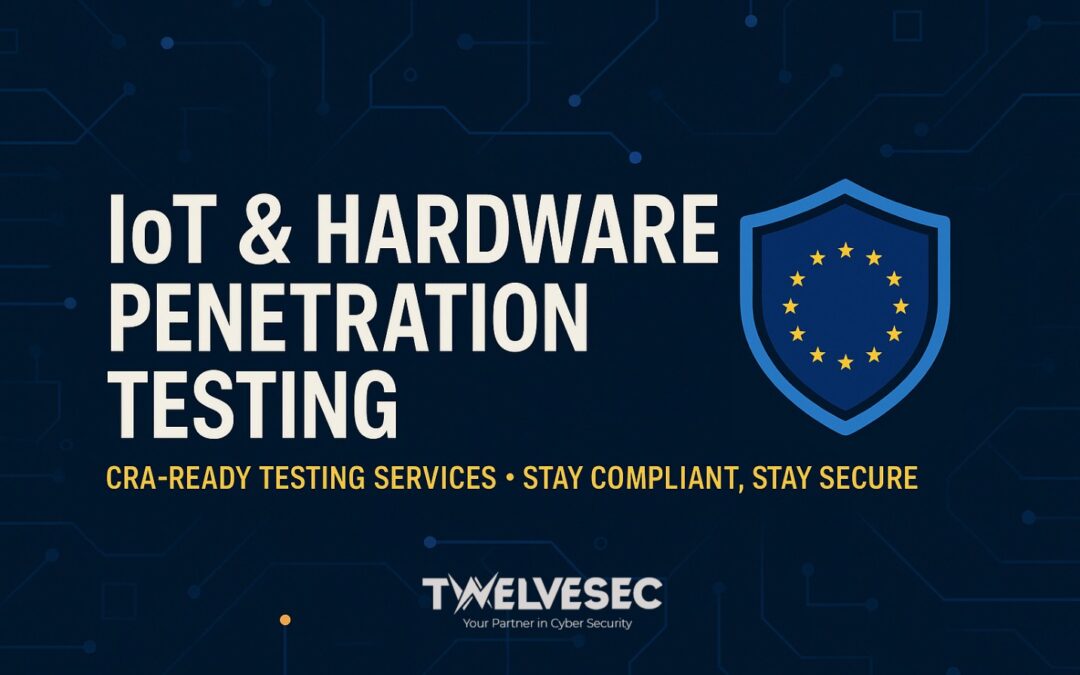Introduction: The Explosive Rise of IoT and the Hidden Risks
From smart homes and medical devices to connected factories and self-driving cars, the Internet of Things (IoT) is no longer futuristic. It’s here, and it’s everywhere. But as the number of devices connected to the internet explodes, so do the opportunities for attackers.
According to recent research, over 30 billion IoT devices will be in use by 2030. Yet most of these devices are rushed to market without sufficient security testing, leaving backdoors wide open for cybercriminals. This is where IoT and hardware penetration testing becomes not just a best practice, but a business-critical imperative.
What Is IoT & Hardware Penetration Testing?
IoT Penetration Testing is the systematic assessment of an IoT device’s ecosystem, hardware, firmware, network protocols, cloud endpoints, APIs, and mobile interfaces, to identify and exploit security vulnerabilities before attackers can.
Hardware Penetration Testing digs even deeper, physically interacting with the device’s printed circuit boards, memory chips, debug interfaces (e.g., JTAG, SWD, UART), side-channel attack and fault injections surfaces to uncover vulnerabilities that can’t be spotted through software testing alone.
In short, IoT pen-testing secures the entire ecosystem. Hardware pen-testing secures the device core.
Why This Matters More Than Ever; The Real-World Risks
- Medical Devices: Hackable insulin pumps, pacemakers, and imaging equipment can put lives at risk.
- Smart Homes: Vulnerabilities in thermostats or security cams can give attackers a backdoor into your home Wi-Fi network.
- Industrial Systems: IoT-based SCADA and ICS systems can be disrupted to cause widespread outages or even sabotage.
Case in point: The infamous Mirai botnet turned thousands of vulnerable IoT devices into a global DDoS weapon, taking down parts of the internet itself.
Enter the EU Cyber Resilience Act (CRA); Compliance Is Coming
To strengthen cybersecurity across the EU, the European Union has introduced the Cyber Resilience Act (CRA). This regulation sets clear rules for selling products with digital elements (such as software and connected devices) in the EU, ensuring they are secure against cyber threats.
Key Requirements of the CRA:
- Market Rules for Digital Products
Sets rules for selling products with digital elements (like software or connected devices) in the EU to make sure they are secure from cyber threats. - Cybersecurity Requirements for Design and Development
Requires that digital products are designed, developed, and produced with strong cybersecurity protections built in from the start. - Handling of Vulnerabilities
Manufacturers must have processes in place to find, report, and fix security issues (vulnerabilities) during the product’s entire lifetime.
Economic operators (like importers/distributors) also have responsibilities to support this. - Surveillance and Enforcement
Introduces rules for monitoring and checking whether the cybersecurity requirements are followed, and defines how authorities can enforce them.
Who’s Affected?
The Regulation applies to any digital product (hardware or software) sold in the EU that connects, directly or indirectly to a device or a network.
It does not apply to:
- Some health and vehicle products, check this article for this case.
- Products certified under the EU aviation regulation (2018/1139)
- Products covered by Directive 2014/90/EU (maritime equipment)
- Identical spare parts (built to the same specs) used to replace parts in digital products
- Products made only for national security, defence, or to handle classified information.
Failing to comply may result in fines, recalls, reputational damage, and exposure to cyberattacks.
How Penetration Testing Supports CRA Compliance
At TwelveSec, we’ve aligned our IoT and hardware penetration testing methodology to support the CRA’s key objectives. Here’s how:
Critical Vulnerability Handling Practices & Penetration Testing Alignment
|
|
TwelveSec’s Proven Approach to IoT & Hardware Testing
We don’t just break things, we break them methodically, ethically, and surgically to expose what could be exploited in the wild.
Our Methodology:
- Threat Modeling: Identify likely attack vectors based on use case and context
- Hardware Analysis: Examine ports, debug interfaces, hardware protocols, memory dumps
- Firmware Reverse Engineering: Analyze binary code for backdoors or bugs
- Protocol Testing: BLE, ZigBee, MQTT, Wi-Fi, and more.
- Mobile & Cloud Ecosystem: Test mobile apps, APIs, and Web applications and cloud integrations
- Reporting & Retesting: Deliver actionable insights, retest after mitigation
This full-stack, end-to-end approach ensures that your device isn’t just working, it’s resilient.
Not Just Security – A Competitive Advantage
In a crowded marketplace, being able to prove the security of your IoT product is a powerful differentiator.
- Faster market access through compliance
- Greater trust with enterprise and government clients
- Lower risk of breach, recalls, or regulatory fines
- Improved investor confidence
- A single incident can undermine client trust.
Security is no longer a cost center; it’s a strategic asset.
Why TwelveSec?
With 12+ years of experience in cybersecurity and deep expertise in hardware and embedded systems, TwelveSec has helped secure everything from medical equipment to industrial controllers and consumer electronics.
What sets us apart:
- Custom labs with advanced RF, electrical, and fault-injection tools
- Cross-industry experience (Medical, IoT, Telecom, ICS, Banking, Governments)
- Deep Technical Assessments Aligned with Real-World Threats
- Lifecycle Security Integration for Long-Term Product Resilience
Our goal: turn your product into a cyber-hardened device that stands up to regulation and real-world threats alike.
Final Thoughts: IoT Without Security Is a Ticking Time Bomb
If you’re building or deploying IoT systems in the EU or even globally, the writing is on the wall: cybersecurity is not optional. It’s a requirement, an expectation, and soon, a legal obligation under the CRA.
Let TwelveSec help you get ahead of attackers, and ahead of the regulatory curve.
Secure your IoT future today. Book your penetration test with TwelveSec.

